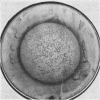Abstract
Berk, Richard S. (Wayne State University, Detroit, Mich.). Nutritional studies on the “auto-plaque” phenomenon in Pseudomonas aeruginosa. J. Bacteriol. 86:728–734. 1963.—Examination of 20 cultures of Pseudomonas aeruginosa indicated that 18 cultures possessed the common property of spontaneously lysing to form “plaques” or erosions on themselves in the absence of a sensitive indicator strain. Maximal lysis and plaque production was found to occur on a medium with a Tryptone concentration of 2.0 to 2.5%. Reduction of the Tryptone concentration to 0.5% or less supported growth, but was usually inadequate for support of lysis. However, addition of l-asparagine or l-arginine to 0.5% Tryptone induced lysis. Examination of five strains of Pseudomonas, which routinely exhibited the autolytic phenomenon, indicated that all were both lysogenic and pyocinogenic when tested against other Pseudomonas strains on both 2 and 0.5% Tryptone. Culturing of autolytic strain Pa-1 on a simple medium composed of glucose and inorganic salts appeared to be inadequate for “auto-plaque” formation, although lysis occurred occasionally when a yeast extract concentration of 1% was incorporated into the medium. Suppression of auto-plaque formation was also effected by growing the culture on Technicon dialyzing membrane D3 overlaid on 2% Tryptone, although lysogenic lysis of an indicator strain was demonstrable on the membrane.
Full text
PDF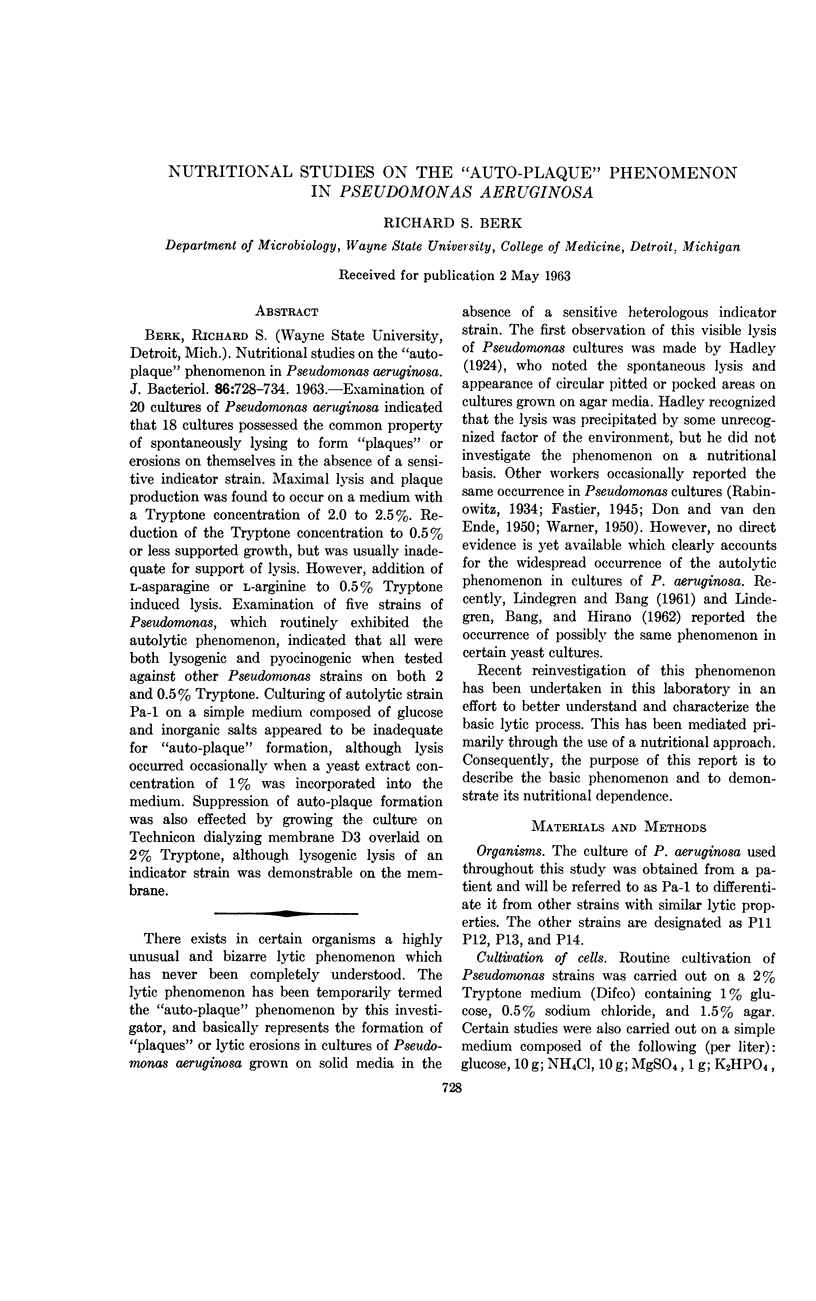
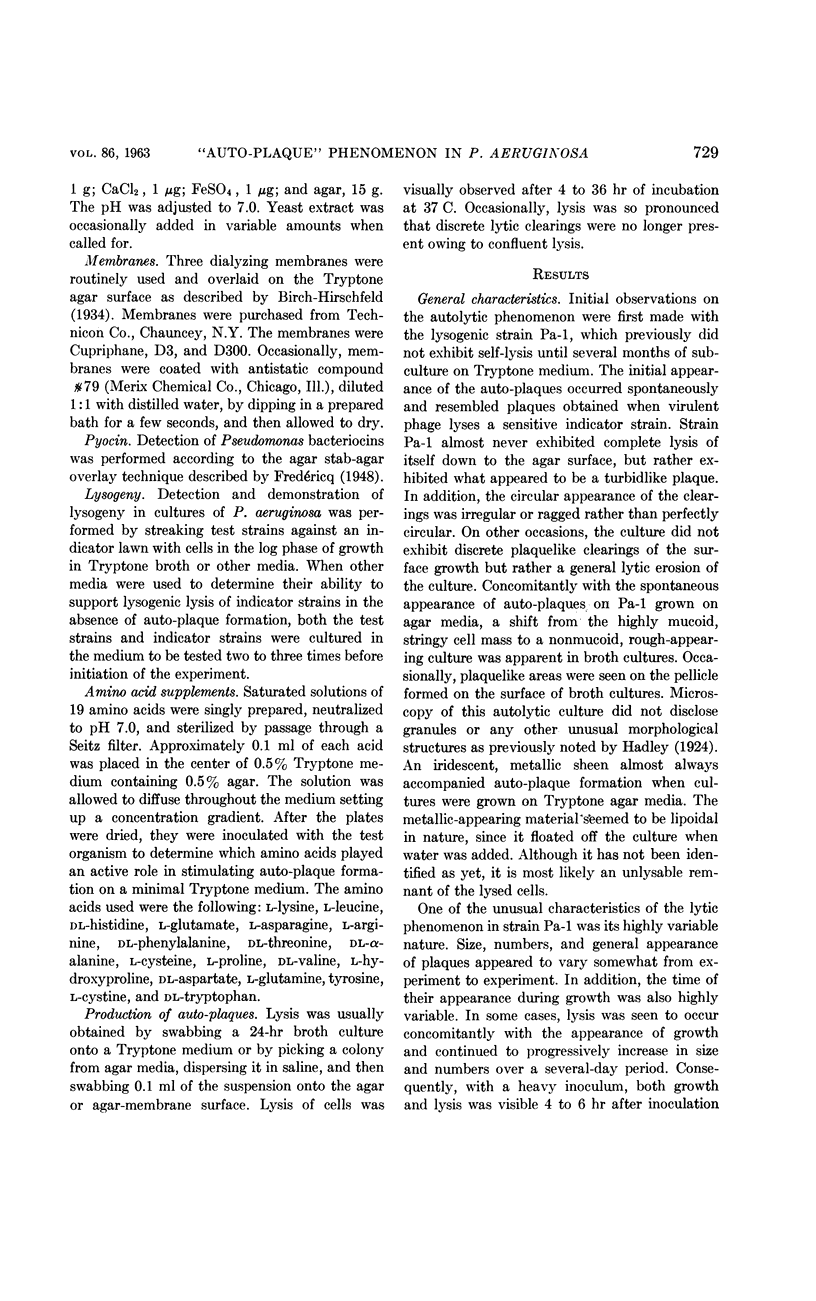
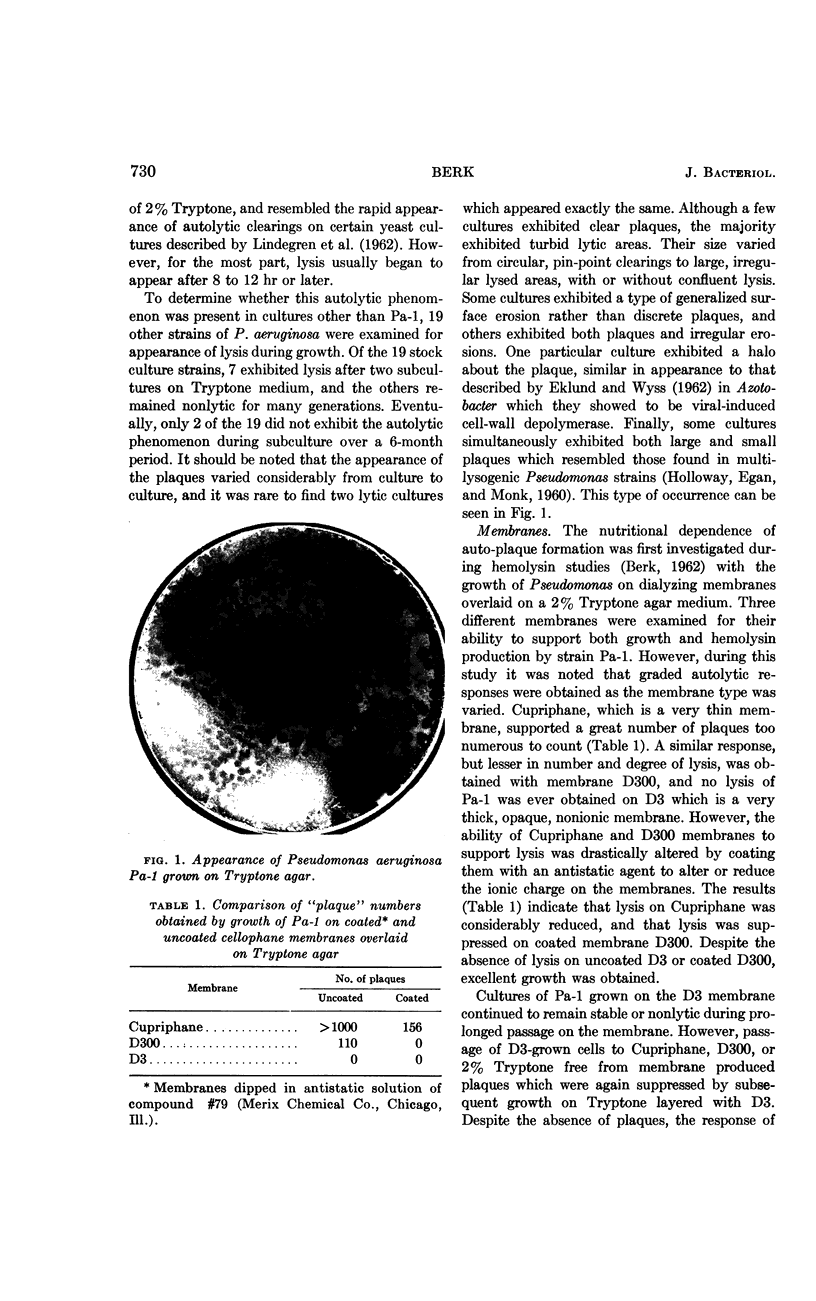
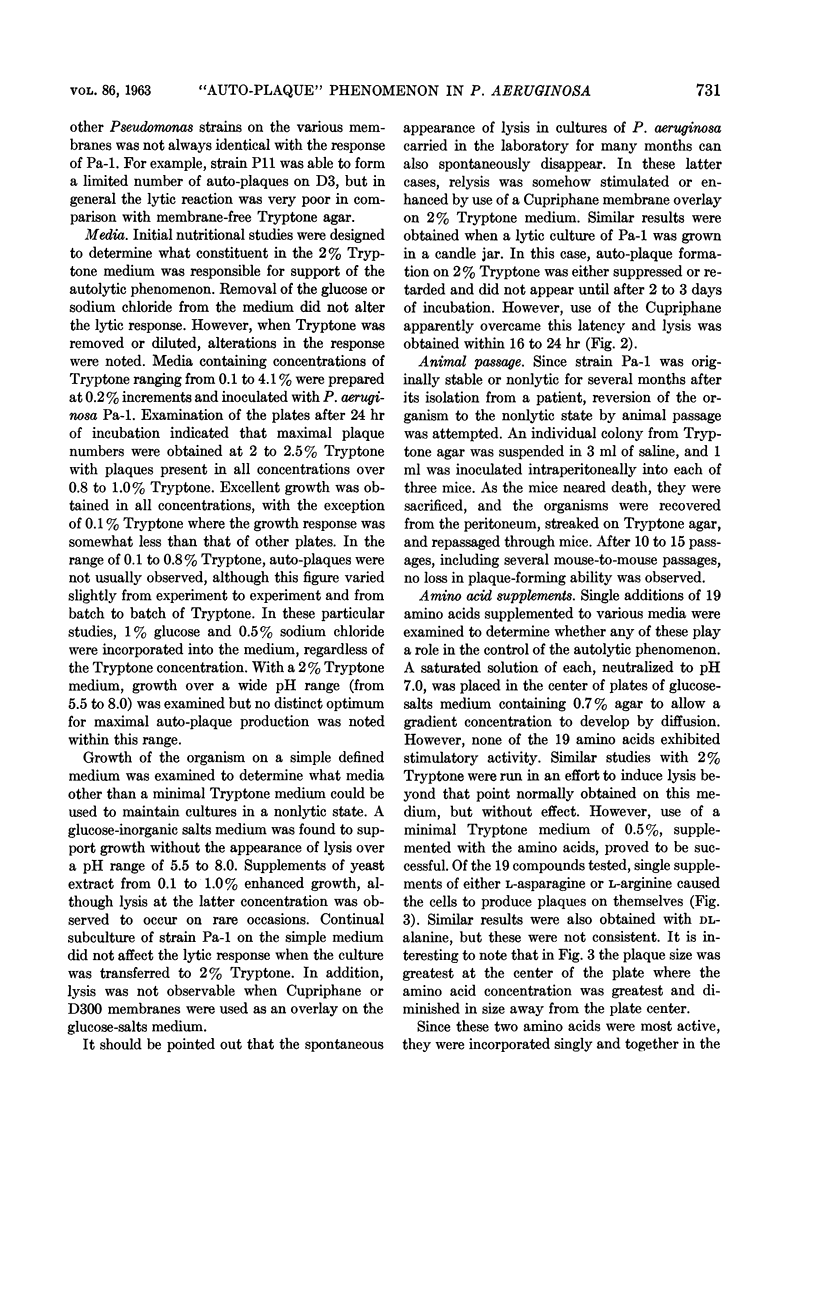
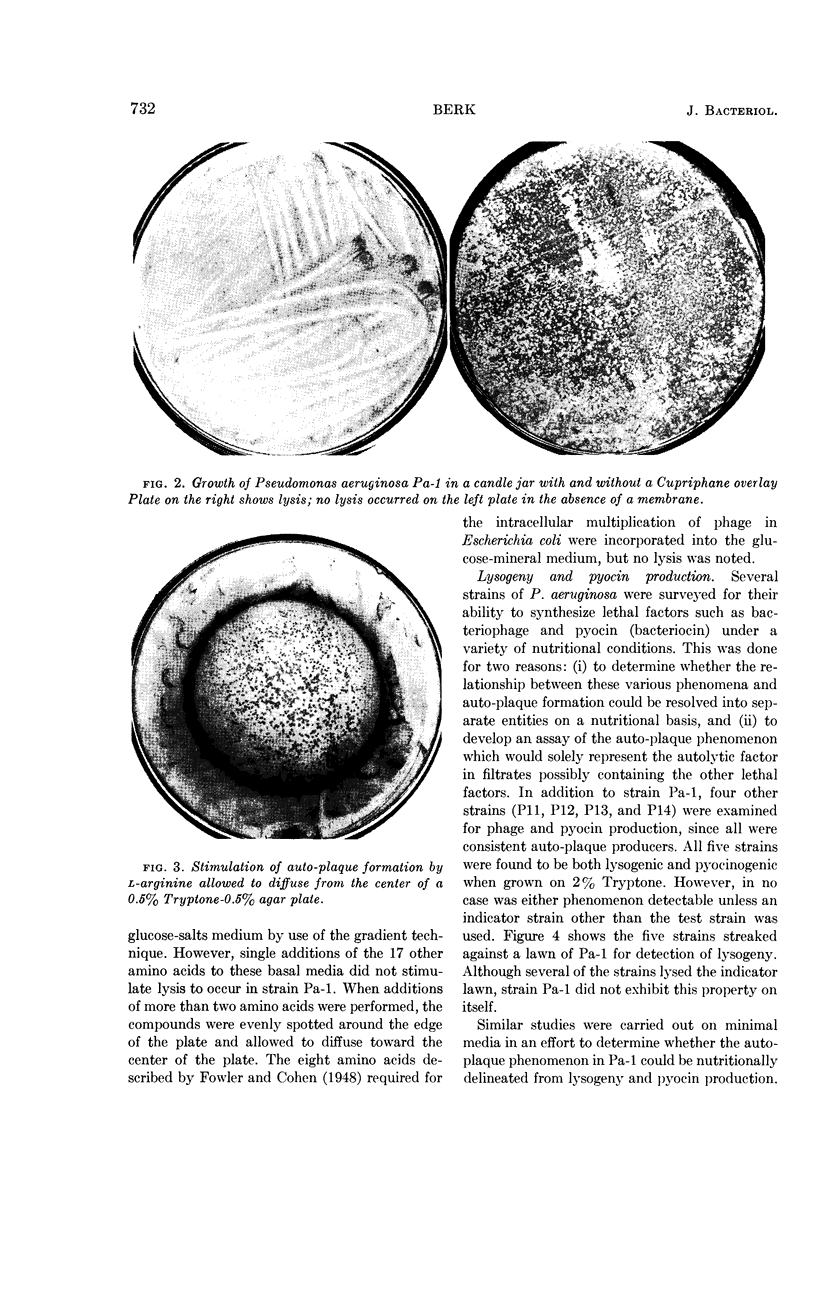
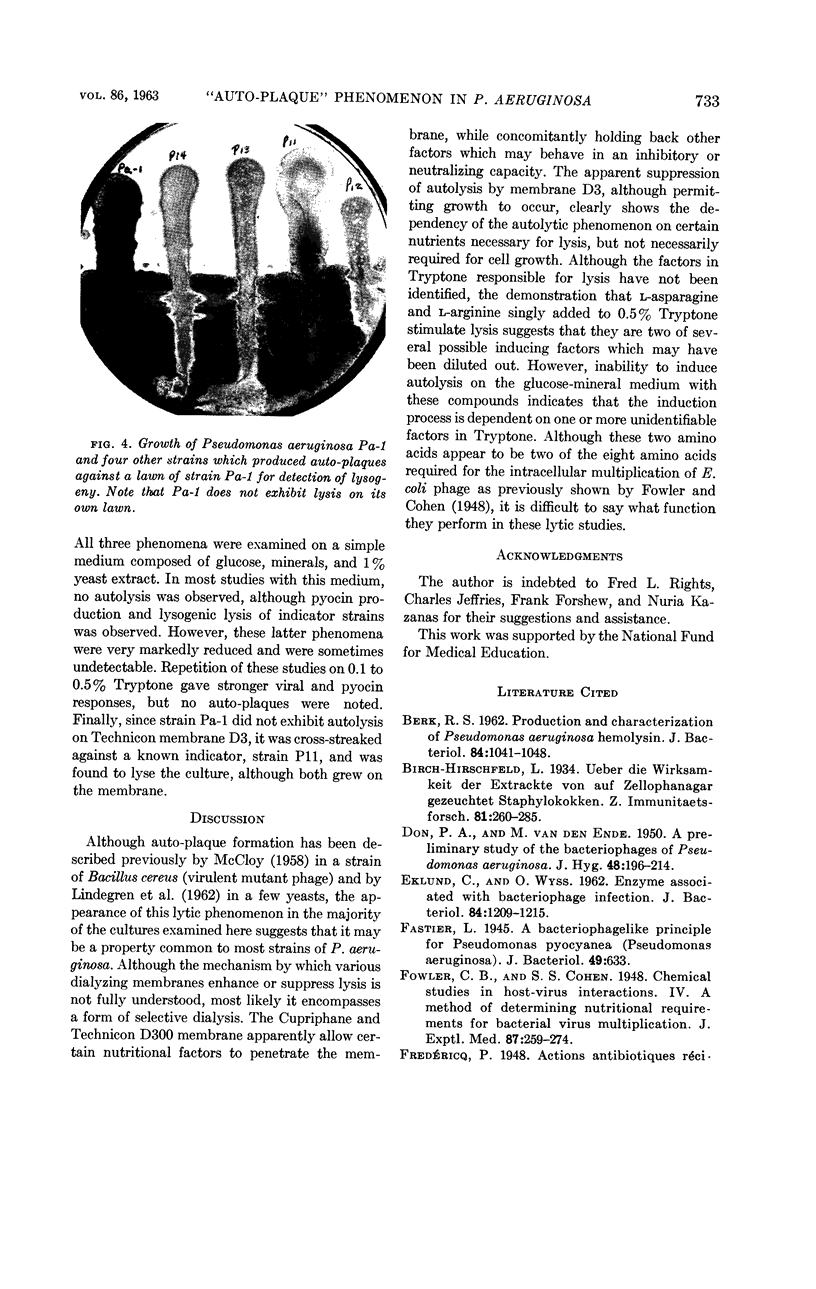
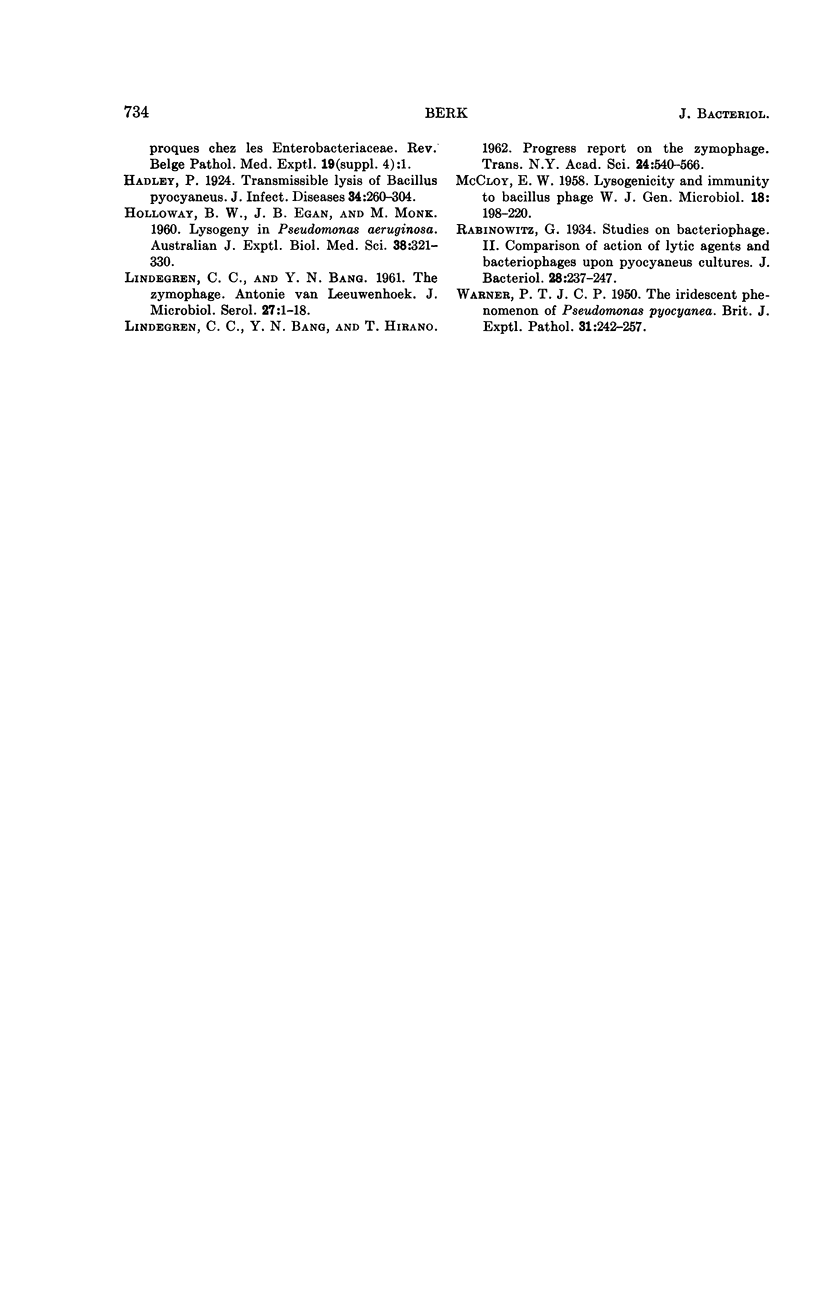
Images in this article
Selected References
These references are in PubMed. This may not be the complete list of references from this article.
- BERK R. S. Production and characterization of Pseudomon as aeruginosa hemolysin. J Bacteriol. 1962 Nov;84:1041–1048. doi: 10.1128/jb.84.5.1041-1048.1962. [DOI] [PMC free article] [PubMed] [Google Scholar]
- Eklund C., Wyss O. ENZYME ASSOCIATED WITH BACTERIOPHAGE INFECTION. J Bacteriol. 1962 Dec;84(6):1209–1215. doi: 10.1128/jb.84.6.1209-1215.1962. [DOI] [PMC free article] [PubMed] [Google Scholar]
- Fastier L. B. A Bacteriophagelike Principle for Pseudomonas pyocyanea (Pseudomonas aeruginosa). J Bacteriol. 1945 Jun;49(6):633–633. doi: 10.1128/jb.49.6.633-633.1945. [DOI] [PMC free article] [PubMed] [Google Scholar]
- HOLLOWAY B. W., EGAN J. B., MONK M. Lysogeny in Pseudomonas aeruginosa. Aust J Exp Biol Med Sci. 1960 Aug;38:321–329. doi: 10.1038/icb.1960.34. [DOI] [PubMed] [Google Scholar]
- LINDEGREN C. C., BANG Y. N., HIRANO T. Progress report on the zymophage. Trans N Y Acad Sci. 1962 Mar;24:540–566. doi: 10.1111/j.2164-0947.1962.tb01431.x. [DOI] [PubMed] [Google Scholar]
- LINDEGREN C. C., BANG Y. N. The zymophage. Antonie Van Leeuwenhoek. 1961;27:1–18. doi: 10.1007/BF02538417. [DOI] [PubMed] [Google Scholar]
- McCLOY E. W. Lysogenicity and immunity to Bacillus phage W. J Gen Microbiol. 1958 Feb;18(1):198–220. doi: 10.1099/00221287-18-1-198. [DOI] [PubMed] [Google Scholar]
- Rabinowitz G. Studies on Bacteriophage: II. Comparison of Action of Lytic Agents and Bacteriophages upon Pyocyaneus Cultures. J Bacteriol. 1934 Sep;28(3):237–247. doi: 10.1128/jb.28.3.237-247.1934. [DOI] [PMC free article] [PubMed] [Google Scholar]
- WARNER P. T. J. C. P. The iridescent phenomenon of Ps. pyocyanea. Br J Exp Pathol. 1950 Apr;31(2):242–257. [PMC free article] [PubMed] [Google Scholar]





